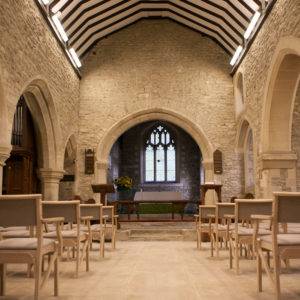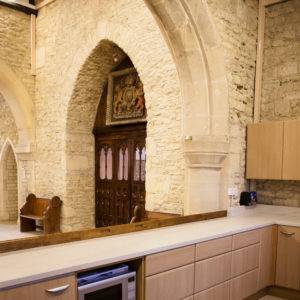
Church Conversion or Refurbishment Projects: Your Divine Solution
Refurbishment, re-order or conversions of old churches, as with many listed buildings, have become more commonplace – and it’s no wonder. These beautiful old buildings have a charm and magic all their own; their ancient stone walls worn down by the touch of reverent worshippers over hundreds of years, and their cobbled moss-covered pathways rounded by the feet of the local parishioners.
When contemplating re-ordering of the parish church, it goes without saying that the project overseer will want to keep as much of the original personality of the building as possible. They will certainly feel a responsibility to consider the additional requirements and how they will fit in with the character of the church, ensuring that any renovations will be sympathetic to the overall feel of the building.
But, if these incredible listed buildings and churches are so full of character and ancient beauty, why would you want to engage in this intervention?
Reasons for Church Re-order
While a small, quaint stone church on a corner plot may have served the congregation a hundred years ago, time (unfortunately) marches on. Today, space is at a premium in our densely populated country, and many buildings are required to perform double duty.
- Perhaps the congregation has expanded and there is a need for more rest rooms, possibly a kitchen or social area within the building or adjacent to (in a form of extension).
- Often, the building itself is in need of repairs such as replacing rotting roof timbers, fixing loose roof slates, repointing stone walls or repairing stained glass windows.
- As is frequently the case, the parish council identifies the need for a communal space for young people to gather, or to encourage the interaction of the local community in a safe and appealing environment.
Whatever the reason for your church project, you likely know that you will require the assistance of listed building architects to guide and support you in your endeavour.
Choosing Architects For Listed Buildings
It is wise to select your architects at the outset of your project.
You may have an idea of what you want, the time scale you can work to, and an estimated budget. However, the one constant in old building renovations is that you just never know what’s lurking behind a panel or a wall.
What would you need to consider?
- Old buildings were built differently than they are today, making use of traditional materials such as stone and lime mortar. They tend to be more expensive and require specialised services.
- Older buildings are, more often than not, listed; considered of historical or architectural significance. Understanding these values of importance is the first step to knowing what changes you will be able to make.
- It will take time and patience to go through the processes required to gain permission for changes to the building. It’s worth remembering that the council, stakeholders and conservation authority will need to know exactly what you’re planning – both inside and out – and any changes that are made without consent can result in hefty fines.
Bearing this in mind, you can see the importance of choosing architects who worked with listed buildings, and who can guide you through the maze of red tape.
A church renovation can easily go from being an exciting project to a lengthy and expensive headache with a lot of opinionated subjectivity.
RIBA Plan of Work
During your discussions with your specialist architects, you will come across the term “RIBA plan of work.”
What is RIBA and how does it influence your building project?
The Royal Institute of British Architects (RIBA) is the professional body for architects in the UK which ensures that the professionals within the industry adhere to the high standard of work and ethics laid out.
“The RIBA Plan of Work” 2013 organises the process of briefing, designing, constructing, maintaining, operating and using building projects into a number of key stages. It details the tasks and outputs required at each stage, which may vary or overlap to suit specific project requirements.” (Source)
It will no doubt be a comfort knowing that your best interests will be catered for by an experienced professional held to these high standards.
Church Re-order or Conversion Ideas
With the technicalities out of the way, you are probably very excited to get involved with your conversion and are collecting ideas of what may work in your beautiful old building.
The team at Marble Air have extensive experience with church re-order, refurbishment and maintenance projects, with one of our favourite being St John’s the Baptist Church in Stadhampton.
“The community building project proposed converting a charming but rarely used village church into a modern village hall. This required provision of welcoming and flexible assembly/venue space with adjacent kitchen and toilet facility.”
This project involved considerably more than aesthetic solutions, as we were tasked to include underfloor heating and a proper sewage system, as well as new gas, water and telecommunication facilities.
The result was a resounding success!
“In 2016 we were awarded a plaque by the Oxford Preservation Trust Awards in the category of Small Projects.”
But if you’re looking to convert an abandoned old church into your dream home or company office, check out Homebuilding & Renovating for some inspirational beautiful church conversion ideas and contact us to discuss your project further.
We’re sure that you have questions and we’d love to assist you. Please feel free to contact Marble Air for advice or information.


